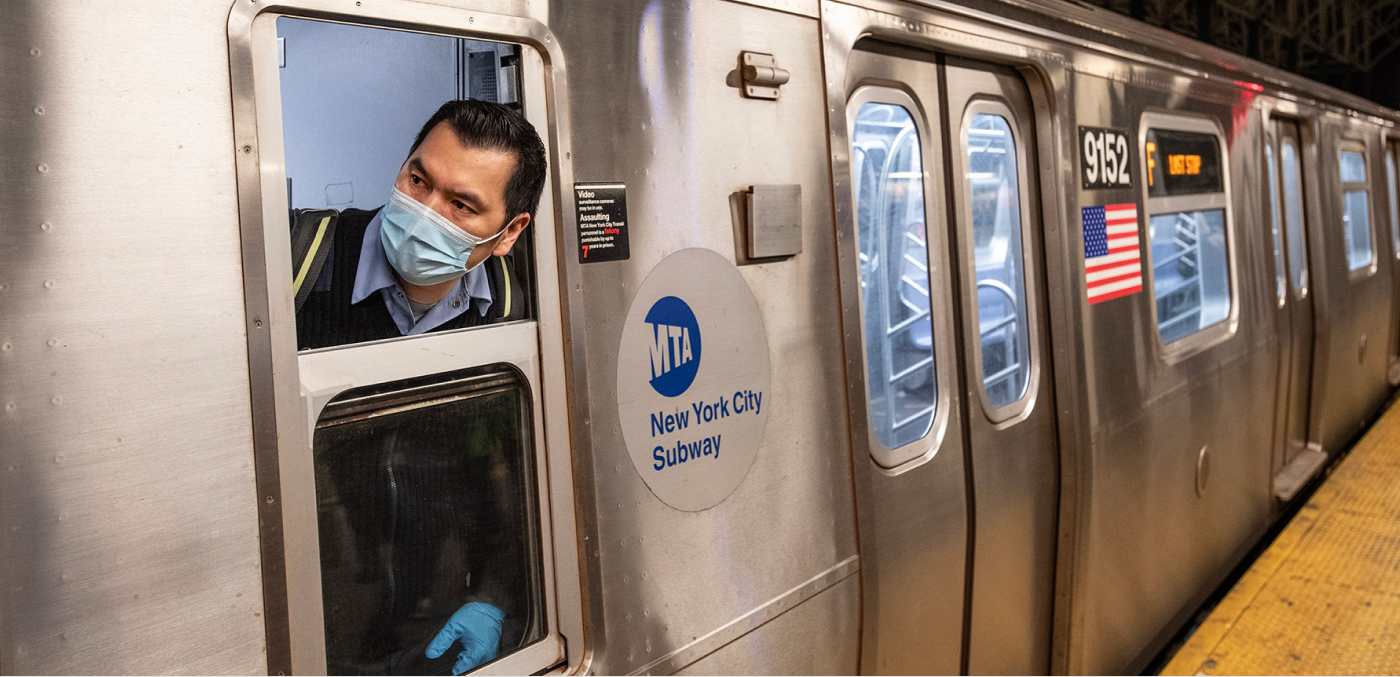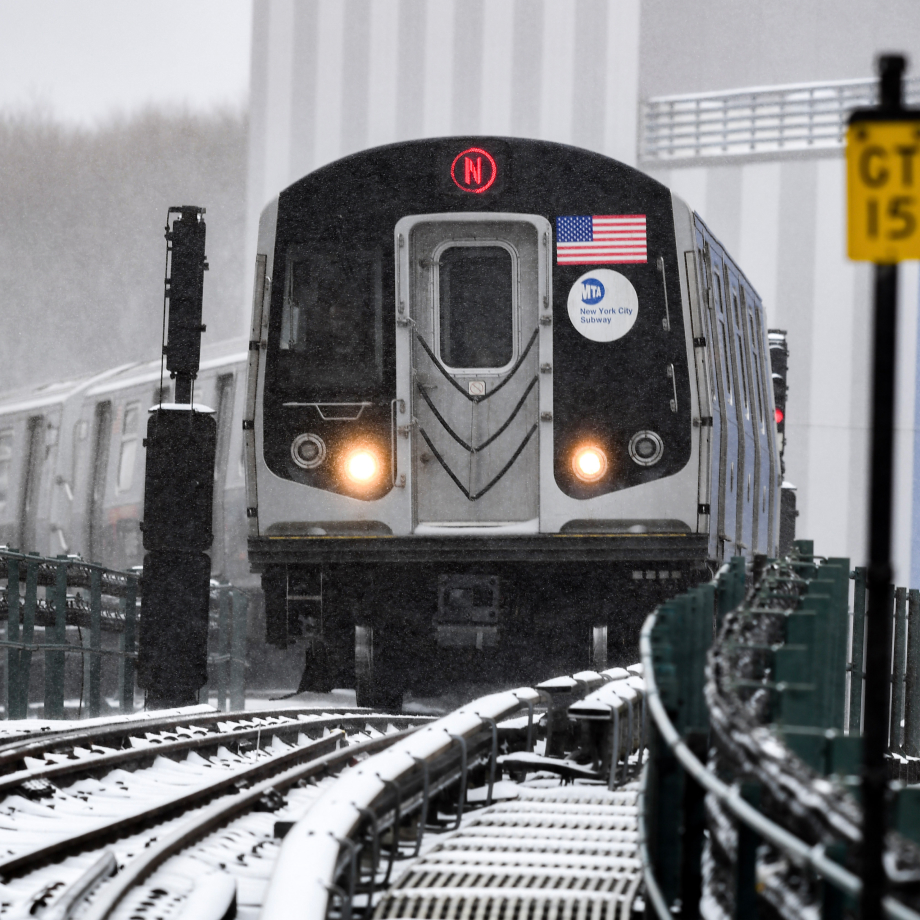As the largest public transportation agency in North America, Metropolitan Transit Authority (MTA) New York City Transit (NYCT) had perfected the tall task of funneling 5.5 million people daily through its vast network of subway, rail and bus lines. But when Covid-19 hit the U.S. in early 2020, New York City’s transit needs changed in a matter of days, forcing the agency to adapt on the fly.
NYCT responded by retooling its processes to ensure rider safety. When train or bus operators were sidelined due to the virus, the agency provided detailed service updates to customers. In May, it began shutting down subway lines and stations every night for intensive cleaning. To fill any overnight transportation shortages, NYCT simultaneously ramped up bus service, including adding new lines and routes, and launched an app to help riders find alternative transportation.
Fortunately, the systems were already in place to coordinate these changes and communicate them to riders. Sarah Meyer, NYCT’s chief customer officer, had introduced Slack in October 2017 to encourage collaboration among the agency’s 50,000 employees. “What we’d been doing for 67 years wasn’t working in today’s environment,” she says.
Jed Poster, a customer communications manager, was among the early Slack adopters. As a member of the customer experience team, he sought new strategies to answer that perennial commuter question, “Where’s my train?” Historically the team pieced together updates from three different systems to provide customer updates. But without a single source of truth, important information slipped through the cracks.
Slack changed that. Now everyone from train operators to dispatchers to station cleaners uses Slack’s mobile app to feed updates back to employees at headquarters. “Slack is the only tool I know of that works seamlessly between mobile and desktop,” Poster says. “Users have the same experience on their phones and computers, so they can work wherever they are.”
While the system was set up several years ago, it’s still serving the team today. “Slack has continued to be valuable for the things that we already used it for—to get information from subway and bus operating teams, synthesize it and disseminate it to customers,” Poster says. “But now we’re using it to coordinate incident response and manage service during these unprecedented times too.”
The operating circumstances may have changed, but NYCT’s reliance on Slack to keep teams aligned and customers informed has not. “Slack has cut through the organization and allowed people with diverse backgrounds and skill sets to interact in a productive way that keeps everyone on the same page,” Poster says.
“Slack has cut through the organization and allowed people with diverse backgrounds and skill sets to interact in a productive way that keeps everyone on the same page.”
Channeling real-time information to better serve millions of riders
During the coronavirus pandemic, MTA teams such as the Digital Communications Unit needed to transition to remote work. Fortunately, the unit was ahead of the curve, and had moved its customer communications process into Slack several years ago, making it easier to coordinate public-facing updates, even from afar.
The DCU relies on multiple computer systems and several different sources for updates from the field. Prior to Slack, dispatchers radioed in issues and delays, while employees back at Rail Control Center scrambled to parse the updates.

Photo © MTA.
To deliver more timely and accurate updates, the unit switched to Slack channels, digital spaces for organizing conversations and projects. “Before Slack, incident information was an endless stream of noise that took years to understand,” says Josh Gee, the MTA’s director of digital customer experience. “Having a tool to help us digitally capture what’s going on and disseminate that information as a single source of truth is transformational.”
Incident communication specialists can track and summarize real-time developments from dispatchers stationed throughout NYCT’s systems in Slack channels, using custom emojis to indicate which lines are affected and how. The DCU then translates these updates into customer-facing communications, pulling cross-functional stakeholders into a dedicated channel to approve copy and messaging. These communications are then shared on the MTA website and app, in-system screens and social media.
Thanks to the context provided by Slack channels, the DCU team can stay aligned and react quickly when customer questions roll in. “With Slack, we produce helpful, timely and consistent service information and customer care, even in the midst of a pandemic,” Poster says.
“Before Slack, incident information was an endless stream of noise that took years to understand. Having a tool to help us digitally capture what’s going on and disseminate that information as a single source of truth is transformational.”
Crowdsourcing real-time updates from the front lines
Even before the coronavirus pandemic, MTA had experience with managing complex transitions in Slack. A year prior, the agency undertook the L Project, an ambitious plan to build resilience and capacity along the L line. All coordination to bring the project to life occurred in Slack channels.
On an average day, roughly 225,000 people ride the L line between Manhattan and Brooklyn. In April 2019, the MTA reduced the frequency of trains on nights and weekends for repair work on the Canarsie Tunnel, which connects the two boroughs. To support commuters without access to alternate routes, the MTA posted staff members on every platform along the line to report issues such as overcrowding on trains and platforms.
The original project communication plan, which called for using walkie talkies, proved problematic for several reasons: teams in the field couldn’t communicate with headquarters and they lacked a centralized place to view issues coming in. So Poster suggested Slack as an alternative.
When the shut-down kicked off on April 26, platform staff reported any issues in #canarsiecoordinator via the Slack mobile app. Updates included photos and videos to provide additional context for those back at headquarters. “The channel took half a second to set up, and we had perfect visibility on what was happening,” Poster says.
Within 24 hours, dozens of people across the organization, from station managers to service delivery leadership to transit planners, were also sharing insights and solutions in channel. With the real-time information coming in, NYCT was able to quickly divert resources to where they were needed most.
The #canarsiecoordinator channel provided a blueprint for success, spurring interest in Slack usage among NYCT employees. Meanwhile, Poster and his team mapped out where Slack could provide the most value—both operationally and for customers—while growing the platform internally.
“I would just take someone’s phone and install the Slack app,” Poster explains. “ I didn’t even have to show them how to use it, I’d say, ‘Go to the #canarsiecoordinator channel, you’ll know what to do.’”
With Slack, NYCT was able to increase cross-functional collaboration in order to provide a better experience for customers. Employees across the company now rely on Slack channels to share information and crowdsource expert answers to customer questions. This helps NYCT create a real-time customer feedback loop while providing swift updates and situational awareness for customers. They also use the Slack mobile app to report issues while traveling through the MTA’s subway and bus network, as well as communicate with teams in the field.
“Having a tool like Slack that inherently discourages silos has really made an impact,” Meyer says. Now, employees in the field or at their desks can leverage their collective knowledge to provide a better experience for millions of riders.
Managers can also use channels to share daily priorities, challenges and updates with their teams while hosting stand-ups in Slack. Gee even created a custom workflow with Workflow Builder to automatically remind his direct reports to fill out a form with their daily priorities. The form auto-posts in the channel so everyone has visibility into the team’s focus areas.
“Having a tool like Slack that inherently discourages silos has really made an impact.”
Simplifying vendor communications with Slack Connect
NYCT’s customer experience team frequently partners with outside agencies on projects to optimize the rider experience. Previously, communication with external partners could be hindered by time-consuming meetings and email chains. Today, the MTA collaborates in real time with external partners using Slack channels in the same Slack workspace through Slack Connect.
“With Slack Connect, something that previously might have taken 10 emails and three days now takes an afternoon,” Gee says.
When the MTA partnered with transportation consultancy Cambridge Systematics to quickly troubleshoot rider complaints about real-time arrival data or trip plan results, the two organizations relied on Slack Connect for fast communication. “A lot of the work is triage and troubleshooting, and there’s nothing better than Slack for that,” Gee says. “Rather than spending 30 minutes thinking about a data issue, emailing the consultancy, and then waiting for a reply, we just post the issue in Slack and work it out together in real time.”
Building on this momentum, the MTA plans to expand its Slack Connect usage to include other companies that work with MTA data. By bringing Cambridge Systematics and other external partners into the same channel, the transit authority can troubleshoot system issues even faster.
The MTA has also used Slack Connect to collaborate with digital product agencies on building interactive transit maps and a new content management system. The company even has a channel with other transit organizations in major cities, where members share news and best practices.
According to Gee, the fluidity of conversations in Slack among multiple organizations in the same channel allows for more productive partnerships. “Especially in transit and governmental organizations, contractor-client collaboration is often assumed to be a very formal, structured thing,” he says. “Slack supports a workflow that’s more organic, person-to-person and efficient overall.”
With the help of Slack, MTA has empowered employees up and down the org chart to connect, collaborate and own the transit experience. The end result? A more efficient operation that keeps millions of riders more informed and moving forward every day.















